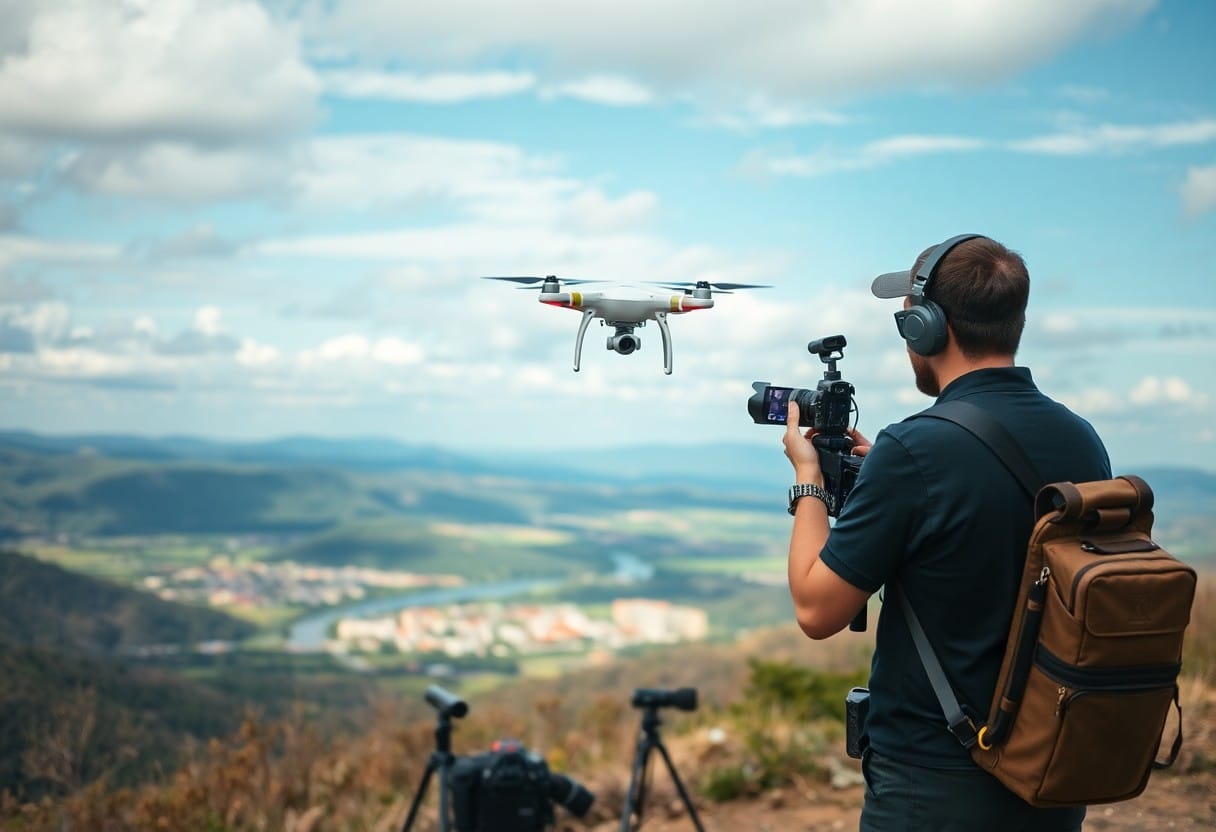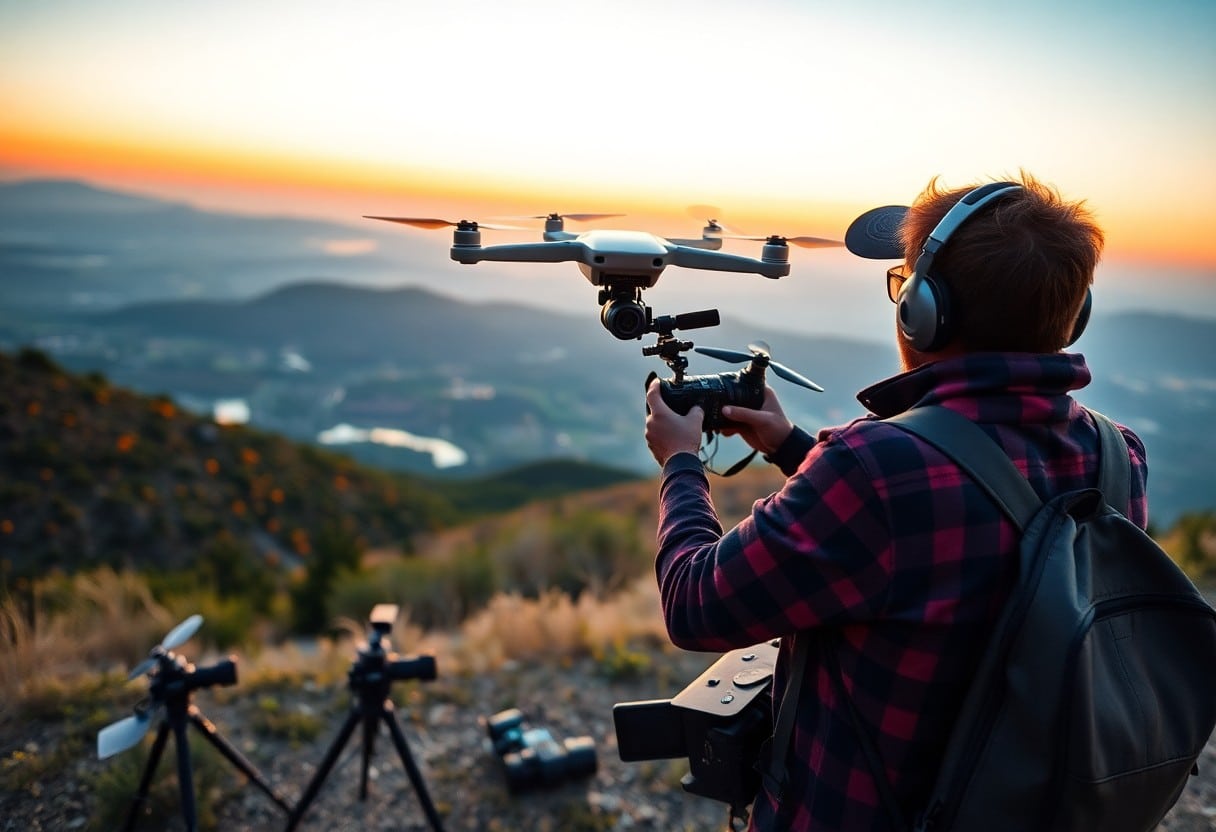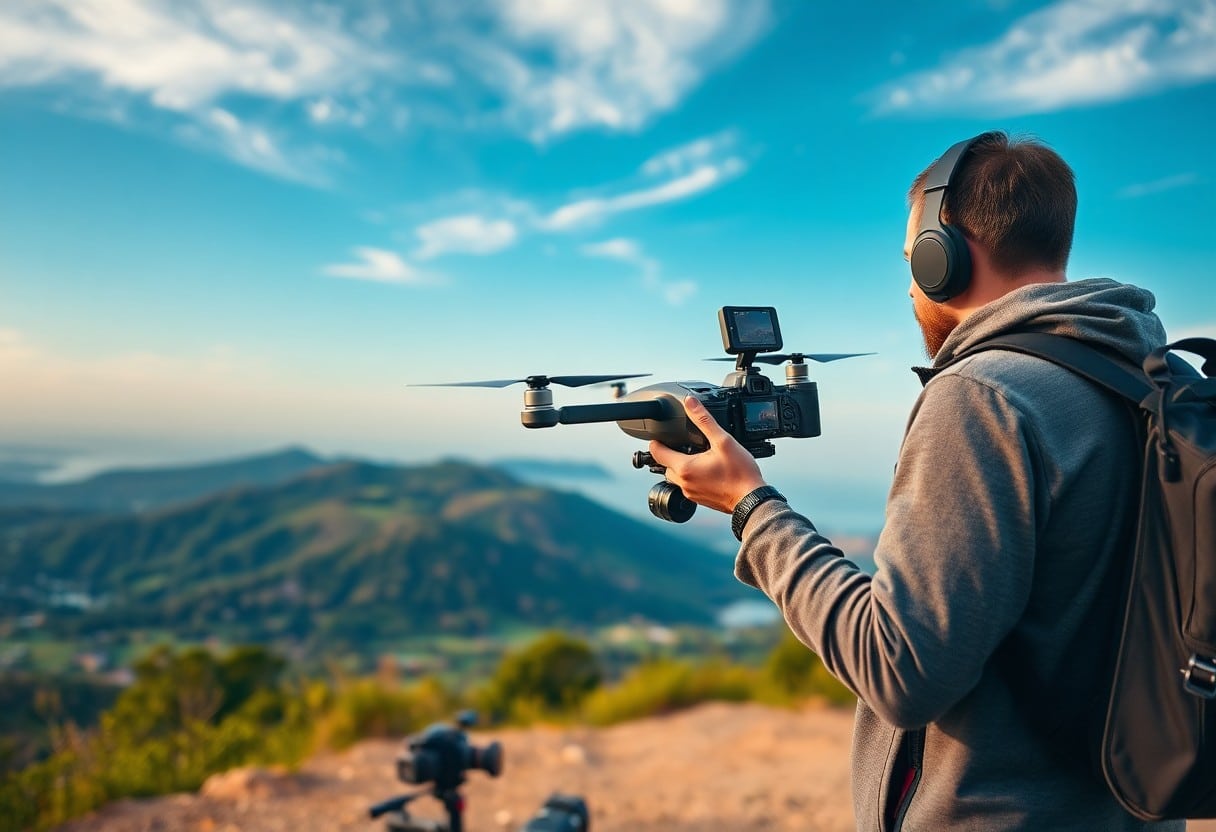13 Pro Steps to Instantly Improve Your Drone Photography Skills
In today's digital age, drone photography offers unprecedented perspectives and opportunities for photography enthusiasts. Do you want to improve your drone photography skills quickly? This article will introduce you to13 Professional Steps to Help You Instantly Improve Your Photography SkillsThe following are some of the most important things that you can do to help your organization. By practicing theseValuable AdviceYou'll be able to take more creative and professional photos that will help you stand out in the world of photography. Ready to get started?
Summary of key points:
- Choosing the right time: Lighting is very important when shooting, dusk and dawn are the best times to shoot.
- Mastering Compositional Skills: Use the rule of thirds to enhance the beauty of your photos.
- Reasonable use of height: Adjust the flight altitude according to the subject to get the best angle of view.
- Shooting Mode: Select the appropriate recording mode (e.g., Auto, Manual) to enhance photo quality.
- Post-editing: Use image editing software to improve the color and detail of your photos.
- Learn Basic Aerial Photography Skills: Understand basic techniques to enhance your shooting.
- Protective Equipment: Inspect and maintain the drone regularly to ensure stable technical performance.

Understanding Your Drone Camera
To improve your drone photography skills, first you must understandHow a drone camera works. Each drone has its own unique camera settings and features, including pixel count, shutter speed, ISO sensitivity, and more. These elements have a direct impact on the quality of the images you take. To get the best out of your photos, it's essential to familiarize yourself with these settings and make the most of them.
Camera Settings Explained
The camera settings of your drone are crucial for capturing high quality photos. You need to knowHow to Adjust Shutter Speed, Aperture and ISOAdjust the shutter speed to suit different shooting environments and lighting conditions. When there is not enough light, increasing the ISO will increase the sensitivity, and adjusting the shutter speed according to the movement of the subject will help you take clearer images.
Choosing the right drone for photography
When choosing a drone, make sure you choose aDesigned for photography. Checking key factors such as its camera pixels, lens quality and stability will allow you to get better photos. There are many different types of drones available in the market, knowing your needs and budget will help you find the most suitable model.
When choosing the right drone for photography, theThe key is performance and functionalityYou should consider the resolution of the drone's camera and the type of lens. You should consider the drone's camera resolution and lens type, such as a DSLR or 4K camera. There are also stability features, such as buffering technology and GPS positioning, that will help you get clear images when shooting at altitude. Don't overlook the ease of operation and battery life of your drone, as they will have a direct impact on your shooting experience. Choosing the right drone will make your photography trip smoother and more enjoyable.

Compositional techniques for stunning images
In drone photography, good composition skills can help you create amazing images. By understanding the different compositional principles, you can enhance the layering and appeal of your images. Combinationlight,angle of visionandThemeThe techniques you use in your photography will make each photo a work of art.
The One-Third Rule and the Framework
The Rule of Thirds is a classic technique in photography that allows you to divide a picture into nine equal parts. Placing the subject at the intersection enhances the balance and appeal of the image. In addition, the use oforganizing planTechniques such as trees or buildings to surround your subject can also add depth and interest to the screen.
Guide Lines and Patterns
Guide lines create a compelling visual effect by guiding the viewer's eye into the frame. These lines can come from roads, rivers, or other elements that naturally lead to your subject. On the other hand, the use of patterns can give the viewer a sense of harmony and beauty, emphasizing a sense of structure and order in the image.
utilizationGuide LinesandPatternsNot only does it enhance the organization of the image, but it also creates emotional resonance. When you find these natural lines in a scene, such as a winding mountain road or a parallel beach, you can visually guide the viewer's eye to theDepth and DynamismIn addition, look for regular patterns, such as city streets or natural shapes, to enhance the image. At the same time, looking for regular patterns, such as city streets or natural shapes, can enhance the image.Attraction and BeautyThe photo is a great way to make your photos more impactful.
Mastering Light Conditions
Light is critical to drone photography. Understanding how different lighting conditions affect the quality of your images can help you take more visually appealing photos. Whether it's at sunrise, sunset or any other time of day, the right light can add dimension and depth to your work.
The best time to take pictures
Sunrise and sunset are the best times for drone photography. The soft light at this time adds natural colors and atmosphere to your images. The strong midday sunlight is not recommended for active use, but you can still capture amazing images with the right techniques.
Adjustment for different weather conditions
Weather changes can have a significant impact on your photography. On cloudy days, you can take advantage of the soft light to capture subtle images, while on sunny days you'll need to learn to adjust your settings to minimize strong shadows.
Under different weather conditions, you can utilize theCloud CoverThis creates a softer light and shadow effect, ideal for photographing landscapes or architecture. In addition, forrainy dayYou can also consider capturing water droplets to give your work a more vibrant feel. Even ifWindy WeatherThe stabilized camera body and reasonable shutter speed allow you to capture dynamic images that show the power of nature. Learning to adjust your shooting technique in various climates will help you better capture every moment.
Shooting modes and filters
In drone photography, the correct
Shooting Mode
The use of filters is the key to improving the quality of your images. Understanding the variousHow to master the fundamentals of drone operations for safe flight?The tips provided can give your photos a professional look.
Effective use of shooting modes
Understanding the differentShooting ModeIt can help you get the best possible image results. For example, using Manual Mode gives you more precise control over ISO, shutter speed, and aperture, especially in different lighting conditions.
Choosing the Right Filter
Selective usefiltersPolarizing filters reduce reflections and improve color saturation, while ND filters provide a smoother image with slower shutter speeds in bright environments.
Choosing the right filters not only improves the picture quality, but also allows you to unleash your creativity. UsePolarizing FilterND filters increase the contrast of the sky, making blue skies more attractive; while ND filters allow you to maintain an ideal exposure during daytime photography, especially essential when photographing running water or moving objects. Don't overlook the role of filters, which will make a significant improvement in the quality of your photographs.
Post-processing your images
Post-processing is critical to improving the quality of your drone photography. With post-production, you can adjust color, contrast, and brightness to make your images more vibrant and compelling. MasteryPost-processing technologyIt will make your work stand out from the crowd. For more tips, you can read this article:Ultimate Pre-Flight Checklist - 9 Steps to Effective Drone Operations
Recommended Editing Software
Choosing the right editing software is an important step in optimizing your images. Common choices include Adobe Lightroom and Photoshop, which offer a wealth of editing features to meet your creative needs. With these software, you can easily perform color correction and image cropping to enhance the overall effect of your images.
Basic Post-Processing Skills
grasp (often fig.)Basic Post-Processing Skillswill make your photographs even better. Starting with adjusting exposure and white balance, and continuing with afterimage removal and sharpness enhancement, these techniques can dramatically improve the quality of your images. By utilizing these techniques, you will be able to better express your photographic ideas.
There are a few things you should focus on during post-imaging.Key Technologies. First, adjusting the exposure improves the overall lighting of the image, making it look more natural. Second, color correction can make the mood of the image more in line with the subject you want to convey. Additionally, using sharpness and contrast adjustments can make details more vivid. Finally, the proper use of filters and effects can add a unique style to your work. All in all, these post-processing tips will help you maximize the potential of your drone photography.

Legal and Safety Considerations
When it comes to drone photography, you must be aware of the variouslegislationrespond in singingSafety SpecificationsComplying with local aviation laws and regulations not only protects you, but also avoids potential legal consequences. Complying with local aviation regulations not only protects you, but also avoids potential legal consequences. Here, you can refer toUnleash Your Potential - 7 Steps to Complete Proficiency with 3D Modeling SoftwareIn addition, you will learn more about how to shoot safely.
Understanding Drone Regulations
You must familiarize yourself with the laws of your country and region.Drone RegulationsThis includes being aware of restricted areas for aerial photography and the permits required. Often, these regulations govern whether a drone can be used in a particular location and the registration process required, and non-compliance can lead to serious legal consequences. Make sure you always check and follow the relevant laws to avoid unnecessary hassle.
Recommendations for Safe Flight Practices
To ensure a safe flight, you need to follow a few basic rulesSafe PracticesFirst of all, always keep the drone in sight and avoid flying over crowds and sensitive areas. First, always keep the drone in sight and avoid flying over crowds and sensitive areas. For example, you can:
- Maintain the drone's altitude within the safe range
- Check the condition of the equipment and batteries to ensure that they are functioning properly
- Check the weather report in advance to avoid bad weather affecting your flight.
- Follow your local community's warnings and recommendations
Any mistake can lead to unnecessary accidents.
Whether you're a novice or an experienced drone pilot.suretyrespond in singingResponsibleThe operation of your drone should always be your first priority. Stay alert and check the status of your drone at all times, and make sure you have enough battery power to avoid accidents in the air. This will not only keep you safe, but also keep others safe. Any negligence can have serious consequences.
- Continuous monitoring of the surrounding environment
- Compliance with all legal requirements
- Ensure proper drone operation
- Choosing the right time to fly
Any accident can cause damage to you, others and the equipment, so these recommendations should be taken seriously.
13 Pro Steps to Instantly Improve Your Drone Photography Skills
With these 13 professional steps, you can quickly improve your drone photography skills. Remember, knowing your equipment, choosing the best time to shoot, utilizing compositional techniques, and post-production processing are all key. Each step will help you capture more stunning images and make your work stand out from the crowd, further enhancing your photography performance."
Frequently Asked Questions
Q: How to choose the right altitude to shoot?
A: The flight altitude should be decided according to the subject matter. For wide-angle landscape photography, it is recommended to fly between 30 and 100 meters to capture more details. However, it is important to pay attention to local laws and regulations to ensure that the flight altitude meets the appropriate requirements.
Q: What are some tips to improve my aerial composition?
A: Tips for improving aerial composition include following the rule of thirds, finding symmetrical elements, and leading lines. Using these compositional principles can make images more visually appealing. Also, try different camera angles to find the best viewpoint.
Q: How do I control the light during a shoot?
A: The best way to control light is to shoot during the golden hour, i.e. sunrise and sunset. The natural light during this time is soft and colorful, which enhances the subtlety of the image. In addition, the use of filters such as polarizing filters can reduce glare and improve the contrast of the image.
Q: How to take aerial photos in different weather conditions?
A: Be careful to avoid midday glare when shooting on a sunny day, and capture soft colors on a cloudy day. If the image looks dull in cloudy weather, try post-processing to enhance the colors. At the same time, you should ensure flight safety and avoid flying in windy or rainy weather.
Q: Why do I need to familiarize myself with my drone setup?
A: Familiarizing yourself with your drone's settings can help you better control every detail of the shooting process. Knowing how to adjust the camera settings, flight mode and auto shooting function can improve the flexibility and success rate of shooting. It is very important to practice sufficiently before shooting.
Q: How do I choose a suitable shooting mode?
A: Drones usually provide different shooting modes, such as single shot, continuous shot and time-lapse. When choosing a mode, you should consider the subject and creative needs. For dynamic scenes, continuous mode can be used to capture the moment, while time-lapse mode is suitable for capturing the afterglow or changes in cloud cover.
Q: How to do post-processing to improve the quality of aerial photos?
A: Post-processing can dramatically improve the quality of your aerial photos. Using image editing software to perform basic exposure adjustments, color correction and cropping can make photos more attractive. In addition, filter effects can be used to enhance specific visual effects and styles.




